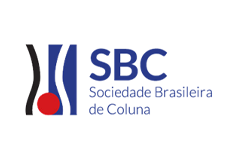Act globally
Gama! knows no bounds, in offering you the best service at the most affordable price
Our team is prepared to care for every step in the job contracted.
Request a quote
Qualified team
100% dedicated to you!

prices

team
Translations
You can find translation into every language at Gama!
FAQ
Get answers to your biggest questions
Although Gama! uses the international market standard for written translation, i.e. charging per word, in the case of sworn translations we are required to follow the norms established by the regulating agency, therefore in this case, the price unit used is the standard page.
A standard page is equivalent to 1000 characters without spaces, according to the standard established by the JUCESP (Board of Trade of the State of São Paulo). This is equivalent to 180 words.
We have a global network of translators, enabling us to offer translation into, or from any modern language. To date, we have carried out successful projects into the following languages: German, Arabic, Cantonese, Catalan, Czech, Chinese, Korean, Danish, Slovak, Spanish, Finnish, French, Greek, Hebrew, Hindi, Dutch, Hungarian, English (North American and British), Japanese, Lithuanian, Macedonian, Mandarin, Norwegian, Polish, Portuguese (Brazilian and Portuguese), Romanian, Russian, Serbian, Swedish, Thai, Turkish, and Vietnamese.
*check availability in the case of simultaneous interpretation and sworn translations.
The deadline is determined according to the subject, format and size of the document to be translated. On average, a translator is able to translate between 2000 and 2500 words a day. But for us at Gama! your need is the determining factor, so be sure to consult us!
In Brazil, a sworn translation is a translation which is produced in a format which is officially validated for legal purposes. This type of translation is done exclusively by a sworn public translator, who is licensed by the Trade Board in the State where he or she works, and delivered in hard copy on official paper, with the translator’s letterhead, seal and signature.
Simultaneous translation or interpretation is the method generally used at lectures, congresses and seminars, where the lecturer speaks to an audience and one or a pair of interpreters, isolated in a translation booth, translate the message simultaneously into another language. The audience uses headphones to listen to the interpreters. Simultaneous translation is also used in visits to factories, and in this case the interpreter(s) use portable equipment.
Consecutive translation is when the speaker talks for a few, then stops talking so that the interpreter can translate what was said. Consecutive translation needs no special translation equipment, and is more suitable for short meetings with a small number of participants, or when receiving and accompanying foreign visitors.












